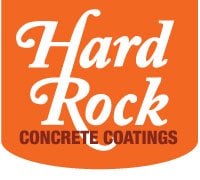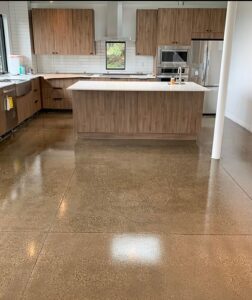Acid staining is a method of finishing concrete that gives it an upscale, natural look. Acid-stained concrete looks beautiful indoors and outdoors and can stand up to a lot of wear and tear. Acid-stained concrete is a great alternative to natural stone or any other finishing material. You can use it to beautifully finish a new slab or breathe life back into an older slab.
Choosing a Color
When the acid stain is applied, it causes a chemical reaction with the concrete that changes the color. The result is a marbled look that is different from every slab. You can’t predict the exact color or pattern of acid-stained concrete, but that’s part of the beauty of it.
You can purchase a stain that will produce a color within a narrow scheme. All the colors produced by acid staining fall into the neutral category. Browns, tans, greens, greys, and reds are the basic categories, but they have a really wide range. You can choose anything from a metallic hue, like gold or copper, to a sophisticated near-black grey.
Applying the Stain
There are 4 basic steps for applying acid stain:
- Cleaning: Spray the surface of your slab off with pressurized water to remove any dirt or debris. Pay attention to how the water is reacting to the concrete, because this will give you an idea of how the acid stain will soak in. If the water is sifting down into the concrete, you’re good to go. If it’s beading up or puddling in areas, you may need to do some dry sanding or degreasing treatments.
- Applying the Stain: Pour the stain onto the concrete, and use a push-brush to spread it out evenly. Make sure the stain is all soaking in evenly, and that there are no areas that are pooling. Allow the stain to dry for about 5 hours, and then apply another coat if you want to deepen the color.
- Cleaning and Neutralizing: Using an acid stain puts your concrete in an acidic state, and it needs to be neutralized once you achieve the desired results. This is done by scrubbing the surface with alkaline soap and giving the slab a good cleaning.
- Sealing: Sealing the concrete is done in steps as well. The first step is to apply a base coat sealer, which keeps moisture and impurities out of the slab. The second layer is a topcoat that protects the base coat. The topcoat can be reapplied periodically to keep your slab looking brand new. You can choose a high-gloss or matte finish for your sealer, or anything in between. Once the sealer is applied, the true color of your slab will be revealed. The sealer will also make your acid-stained concrete last for ages, and make it easy to keep clean.



